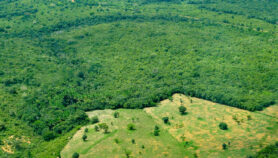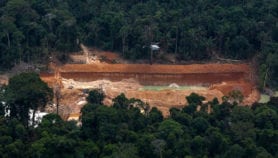Send to a friend
The details you provide on this page will not be used to send unsolicited email, and will not be sold to a 3rd party. See privacy policy.
Below is a round up of news from or about South Asia for the period 1–14 December.
Asian tropical forests in crisis
Asian tropical forests, including India’s Western Ghats and Sri Lanka, are facing alarming losses that are unlikely to relent, according to a series of reports in Current Science. Deforestation is occurring faster in tropical Asia than Africa and Latin America, and half the Asian countries have experienced severe (more than 70 per cent) forest loss. More>>
Nepal biogas shows potential
Biogas technology is beginning to make a mark in Nepal. Over six million tonnes of carbon emissions could be avoided in the next five years by Nepal through large-scale use of biogas, climate change experts tell IRIN. More>>
India, Nepal, projects bag engineering awards
Health and environmental projects in Nepal and India were among the winners of this year’s Mondialogo Engineering Awards. The awards invite teams of engineering students from developing and developed countries to create project proposals that address the UN Millennium Development Goals. More>>
Bacteria detoxify pulp mill effluents
A mixture of two bacteria, Bacillus sp. and Serratia marcescens, helps remove harmful chlorine-containing chemicals from pulp paper mill effluents, scientists report in Bioresource Technology. The process, reported by researchers from the Industrial Toxicology Research Centre in Lucknow, and Pandit Ravi Shankar Shukla University in Raipur, removes sulphates, phosphates, nitrates, phenols and other chemicals from the effluents. More>>
India’s bioenergy plans
India plans to add 1,700 megawatts of power using biogas and bagasse (a byproduct of sugarcane processing). The target consists of 500 megawatts from biomass and 1,200 MW from bagasse. More>>
Longest intergalactic beam discovered
German and Indian astronomers have discovered the longest known intergalactic particle beam ejected from a massive black hole. The beam, reported in Astrophysical Journal by scientists from Inter University Centre for Astronomy and Astrophysics, Pune, and Germany’s Max Planck Institute, stretches more than a million light years and could explain how jets of matter bind together. More>>
Physicists trap light in nano soup
Indian physicists have shown how to trap and retrieve light from a soup of micro- and nano-sized magnetic particles. The finding, by scientists at Bahvangar University in Gujarat and reported in Chemistry World, could pave the way for ‘lab-on-a-chip’ devices that process optical information. More>>
Cyclone Sidr destroys Sundarbans heritage site
Cyclone Sidr, which ripped through Bangladesh in November, has seriously damaged 40 percent of the Sundarbans World Heritage Site, says UNESCO. The site contains rich mangrove forests on the deltas of the Ganges, Brahmaputra and Meghna rivers. More>>













